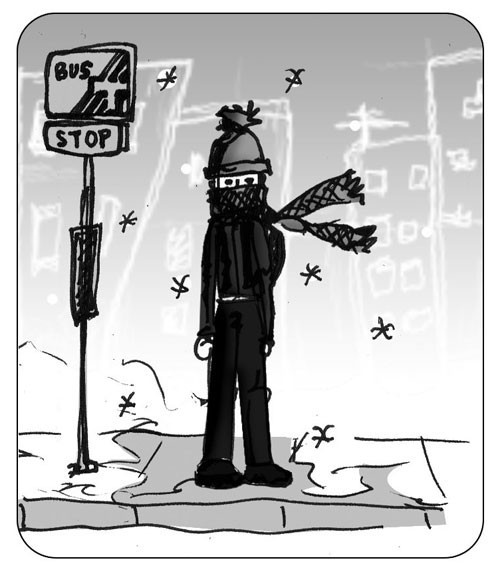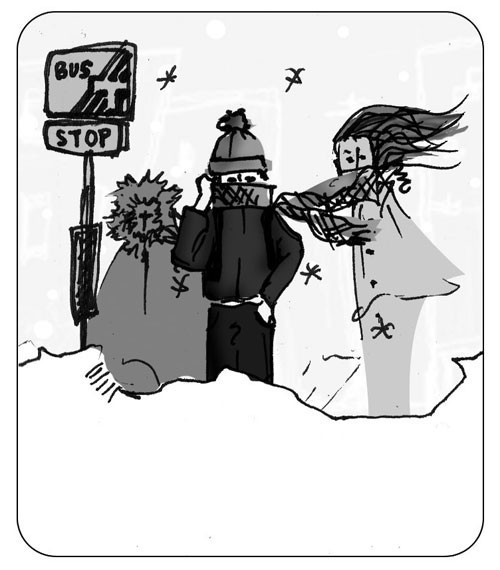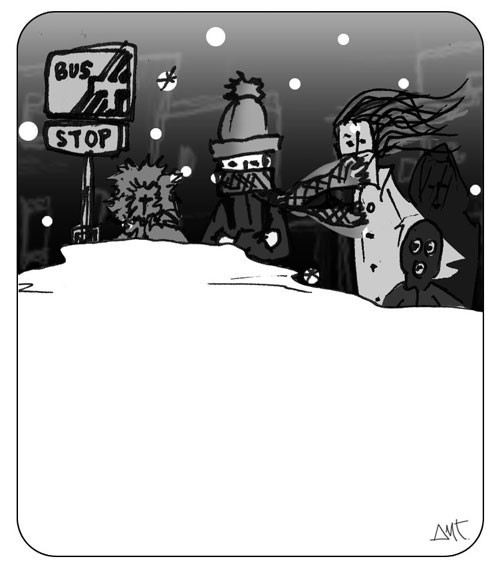Transit riders given the cold shoulder
Students unsatisfied with winter service
Unheated shelters and bus delays have Winnipeg public transit riders opting for less sustainable transportation, as many find waiting for the bus in freezing temperatures just not worth the hassle.
“I once had to wait for over an hour to grab a bus to school,” said Melanee Sloan, an arts student at the University of Winnipeg.
Sloan, who lives by the Royal Canadian Mint on Lagimodière Boulevard, has a 45-minute daily commute.
Because of transit’s inconsistencies, she is now carpooling with her dad.
“If they had more buses, it would be awesome,” Sloan said.
Ken Allen, spokesperson for Winnipeg Transit, said the number of buses increases from 388 in the summer to 450 for the winter season, but drops to 200 for the evening.
“Transit is monitoring the need for more buses accordingly,” he said.
“ Heaters are intended to provide some warmth to people who are in close proximity to the heater. It’s impractical to heat the entire volume of a 72-square-foot shelter.
Ken Allen, Winnipeg Transit
Sarah Bezan, a fourth year English honours student, understands that traffic can be slow during the first few weeks of winter, but she also thinks small improvements can be made.
A Fort Richmond resident, she takes an evening kickboxing class at the University of Manitoba, and sometimes can wait half an hour for the bus in shelters that do little to protect against the cold.
“They have little heaters that are never on, and they just warm the benches rather than the whole shelter,” she said. “And there is a foot clearance on the top and the bottom where the cold wind gets in.”
Sloan said transit should look into heated seats and adding more shelters.
“There is no shelter by my place,” she said.
A shelter was recently added at the intersection of Ellice and Balmoral Streets. Yet it is so far removed from the bus stop that students consistently avoid it.
Allen said there are about 800 shelters in the city, 80 of them containing heaters.
More will be added throughout the year at most major stops on major routes, under the Winnipeg Transit Improvement Program.
Allen said heaters are not as efficient as some believe: they have a limited reach and are less useful under extreme temperatures.
“Heaters are intended to provide some warmth to people who are in close proximity to the heater,” Allen said.
“It’s impractical to heat the entire volume of a 72-square-foot shelter, especially in extreme low temperatures we’ve been experiencing over the past few weeks,” Allen said.
More information about the city’s Transit Improvement Program, including their study regarding Kenaston Boulevard, will be available at public open houses later this month.
Published in Volume 63, Number 17 of The Uniter (January 22, 2009)










